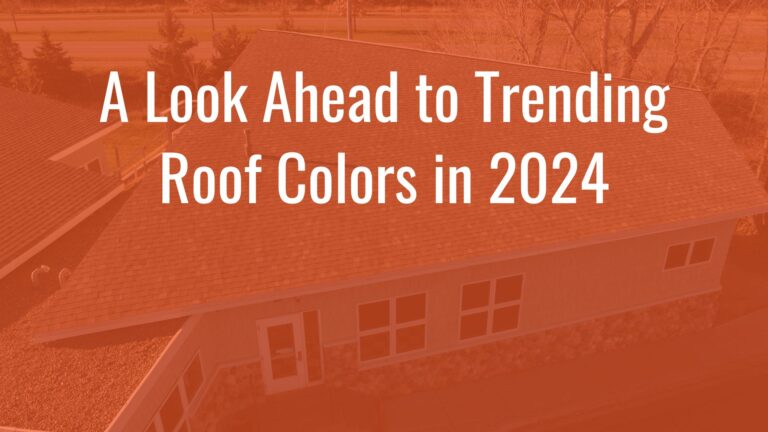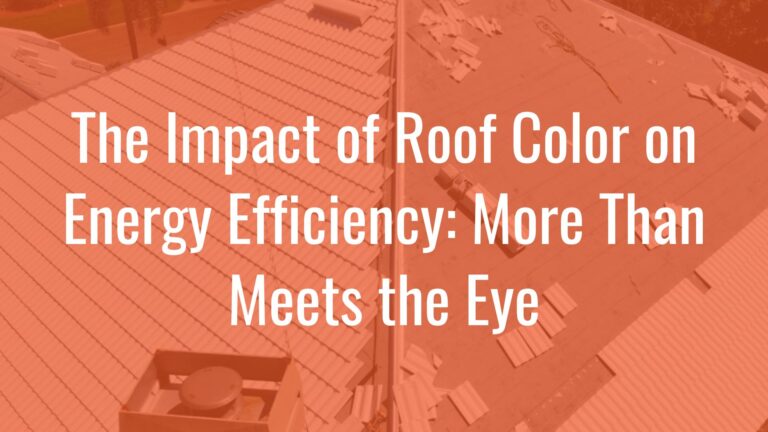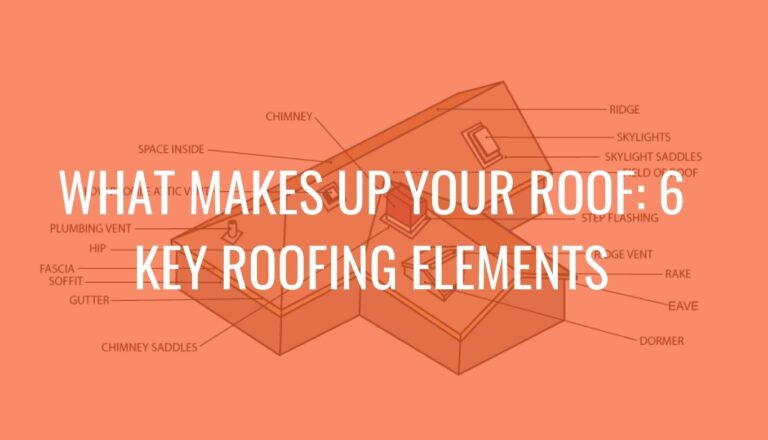What is a Cool Roof?
Did you know that in the typical roofs can reach temperatures of around 150 degrees Fahrenheit during the summer? Like choosing a white shirt instead of black in the summer, the goal of a cool roof is to absorb less solar energy.
The design of a cool roof is to reflect sunlight away and effectively lower home roof temperatures around 50 degrees.
Why? The installation of a cool roof can lower energy usage in homes but there are numerous factors to consider before choosing to install one.
On this page
(Click for a shortcut)
What is a Cool Roof?

Inspired by the sleek homes in Greece, cool roofs are designed to reflect the suns heat away from a building and they can be built onto existing structures.
Most roofing–both residential and commercial–in the United States is black or dark-colored. Because of this, on hot days, the sun will naturally heat your home adding stress to your air conditioner.
A cool roof is the solution that does the opposite. Instead of allowing sun to absorb into the roofing material, cool roofs reflect the rays away thus keeping the home/structure naturally cooler.
Pros
Cool roofs can benefit the homeowner by…
- Reducing cooling bills by decreased demand. Without solar ray absorption on the roofing system, you could save 10% – 15% on energy costs annually!
- Possible qualification for government rebates and programs.
- Increased natural comfort for spaces without air conditioning. Studies have shown that they can reduce indoor temperatures as much as 3 – 9 degrees Fahrenheit.
- Prolonged life of the roof and cooling systems.
Cool roofs can benefit the environment by…
- Decreasing the urban heat island effect by lowering local air temperatures. The urban heat island effect is a phenomenon where more densely populated areas are warmer because of heat transfer onto pavement, buildings, and other urban surfaces.
- Reducing peak energy demand which is a preventative measure for power outages.
- Lowering overall power plant emissions.
- Reflects more sunlight into space thereby offsetting global warming.

(Go Smart Bricks)
Cons
Cool roofs typically cost around the same price as typical roofing materials, but there are still some negatives surrounding them.
- Dirt and algae show very clearly on light colored roofs.
- Increased demand for heating in winter. Without the solar absorption, there is no heat conduction into the home. The heating penalty can be 5 – 10% during the winter months.
- Moisture accumulation will increase with a lower surface temperature. Especially concerning is the condensation that will lead to rust and corrosion of metal parts and flashing. A result of the condensation will also be mild and mildew growth, ice dams, and warping insulation.
- Higher installation costs. Cool roofs have a more expensive price tag, but the return on investment may be worth it.
The Cost of Cool Roofs
Like everything, the cost of cool roofs can vary a lot depending on many factors, but it’s comparable to the cost of a conventional roof. For an averaged size home, the cost of a cool roof can range from $1,500 – $7,000.
You could simply opt for a lighter color for shingles or–because you may not like the aesthetic–you could opt for solar reflective shingles.
Below are some specific costs…
- Solar reflective shingles – $2.00 – $3.00/sq ft
- Cool roof coatings – $0 .75 – $1.50/sq ft
- Single-ply cool rood membranes – $1.50 – $3.00/sq ft
Are cool roofs worth it in colder climates

While cool roofs reduce the heat absorbed by your roofing system in the summer, they also decrease the natural heat in the winter. The Midwest has premium heating and cooling costs.
Living in a cooler climate likely means that a cool roof is worthy of criticism. Because of the colder climate, cool roofs don’t hold on to heat making them poor insulators. In Minnesota specifically, there are 35 days of temperatures above 90 degrees and 50 days below 0 degrees.
At the end of the day, a federal study reported that cool roofs provide annual savings of 50 cents/sq ft. This report takes into account the heating costs of the winter, summertime energy savings, equipment downsizing, and the longer lifespan of cool roofs.
FAQs
What rebates/incentives would a cool roof qualify me for?
There is a possibility that you could receive a loan or rebate. The Environmental Protection Agency and The Department of Energy have worked hard to promote energy efficient home projects. Check this link for qualification guidelines.
What is the difference in temperature change as a result of cool roof installation?
By implementing a cool roof, the indoor temperature may be reduced from 4 – 9 degrees Fahrenheit.
What is Solar Reflection Index (SRI)?
The value that represents the ability of a roof’s capacity to reject solar heat using solar reflectance and thermal emittance.
Are cool roofs better than green roofs?
Both choices are excellent roofing options. The difference that really sets them apart is that green roofs can be quite expensive and require much more maintenance. They offer additional value that may make the cost worth it.
Conclusion
Cool roofs are a great roofing option in order to reduce energy consumption and keep a naturally cooler temperature in your home.
One of the best things you can do if you want to know more about cool roofs is to meet with a contractor who can speak to your specific needs. But remember, your pretty cool if you invest in a cool roof. ( ;



